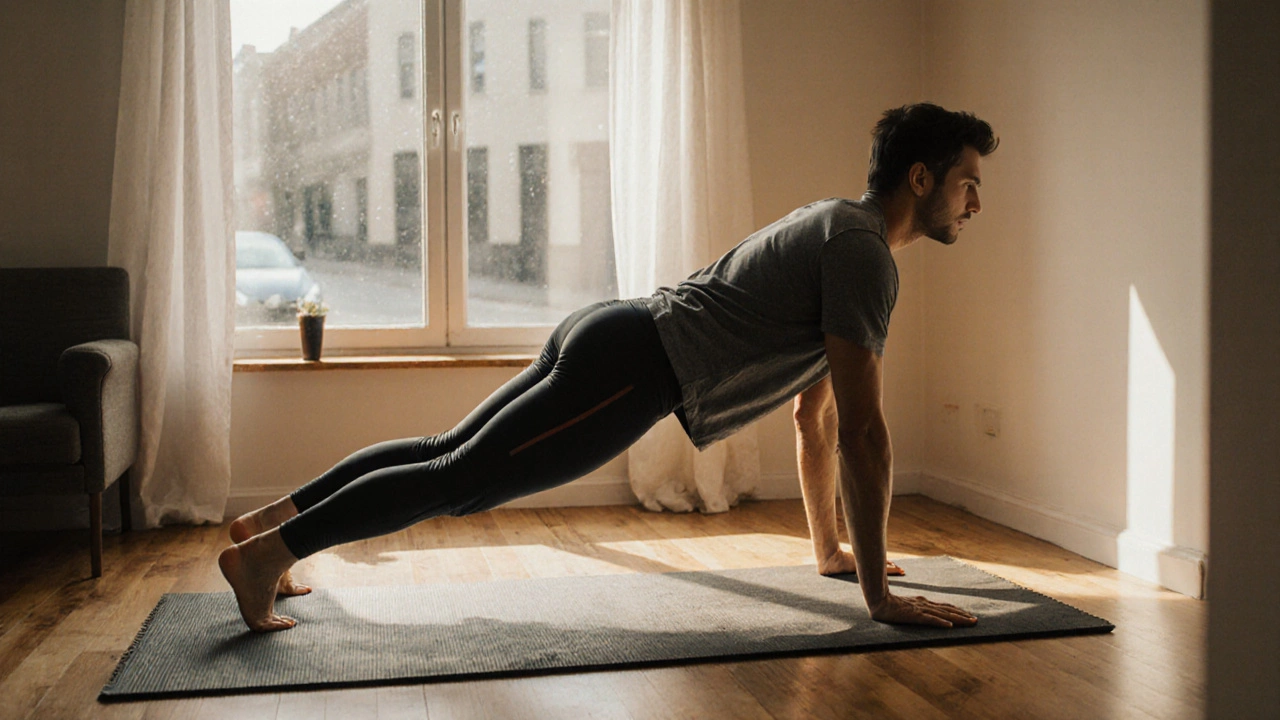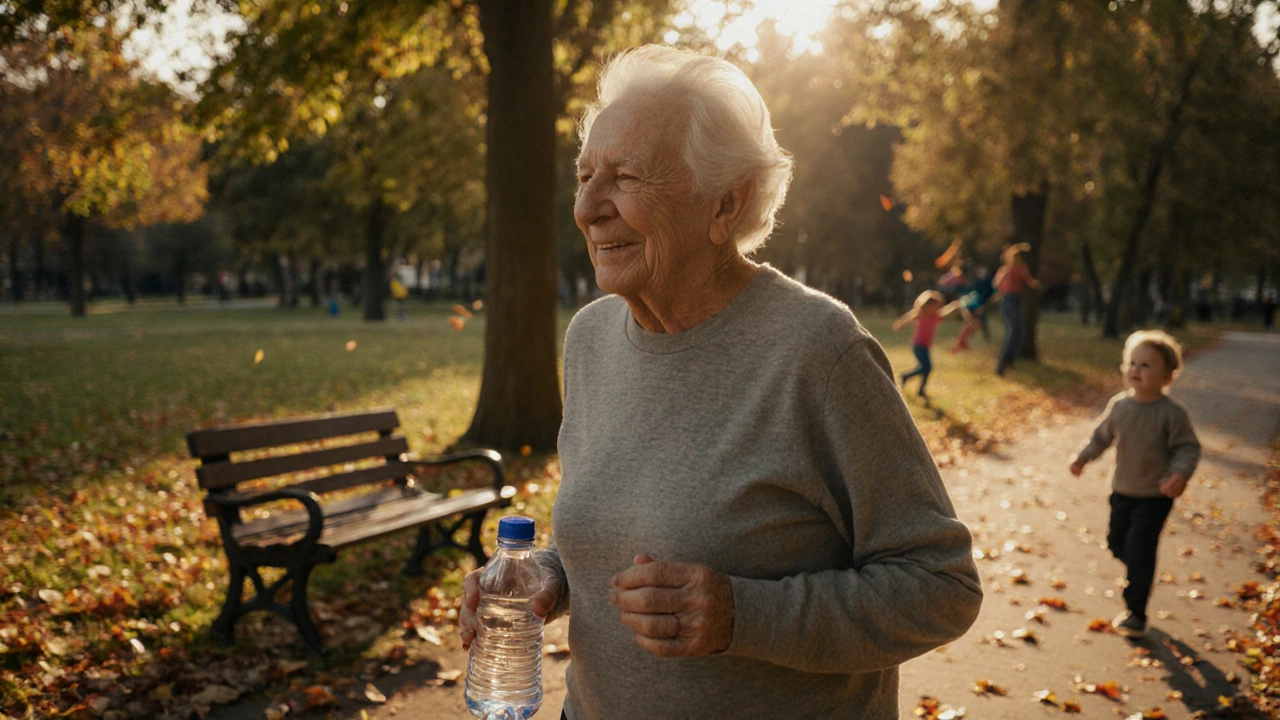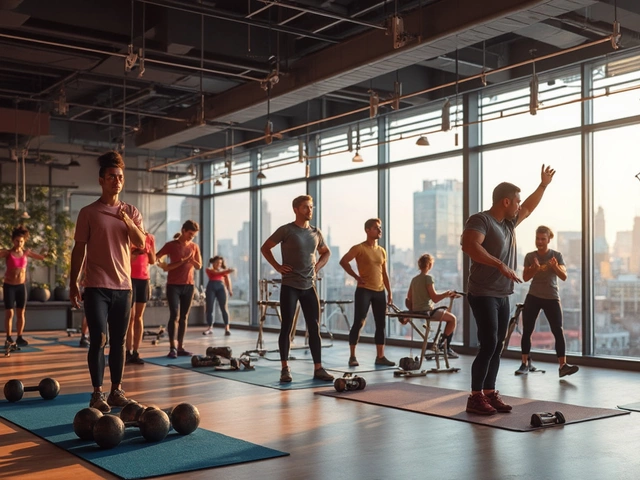
Fitness November 18, 2025
How to Get Perfectly Fit: Real Steps That Actually Work
Daily Movement Calculator
How Your Daily Steps Impact Your Fitness
Based on research showing that increasing daily steps by 2,000 can lead to significant fat loss without diet changes.
For every 2,000 extra steps you add daily, you could lose approximately 3.2 lbs of body fat over 12 weeks. Start small—aim for just 500 more steps each week!
Want to get perfectly fit? You’re not alone. But here’s the truth: no magic pill, no 7-day detox, and no viral app will do it for you. Getting perfectly fit isn’t about quick fixes-it’s about building habits that stick. And it’s way simpler than most people make it out to be.
Stop chasing perfection. Start building consistency.
Most people fail at fitness because they think they need to be perfect. They skip a workout and feel like they’ve ruined everything. They eat a slice of pizza and decide the whole day is wasted. That mindset is what keeps people stuck. You don’t need to be perfect. You need to be consistent.
Research from the European Journal of Clinical Nutrition shows that people who exercise 3-4 times a week, even for just 30 minutes, lose more body fat over six months than those who try to work out daily but burn out after two weeks. The key isn’t intensity-it’s frequency. Show up. Even if it’s a short walk. Even if it’s just bodyweight squats in your living room. Progress happens when you don’t quit.
Move more every day-no gym required
You don’t need a fancy membership to get fit. What you need is to move more than you did yesterday. That’s it.
Take the stairs. Walk during your lunch break. Park farther away. Stand up every 30 minutes if you sit all day. These small actions add up. A 2024 study from the American College of Sports Medicine found that people who increased their daily steps by just 2,000 (about 1 mile) lost an average of 3.2 pounds of body fat over 12 weeks-without changing their diet.
Start with a goal of 8,000 steps a day. Use your phone’s step counter. Don’t obsess over the number, but notice the trend. If you’re hitting 5,000 today, aim for 5,500 tomorrow. Small wins build momentum.
Strength training isn’t optional-it’s essential
Here’s something most people don’t realize: you can’t get perfectly fit without building muscle. Fat loss happens in the kitchen, but your body shape, metabolism, and long-term health come from strength.
When you lift weights or do resistance exercises, you increase your resting metabolic rate. That means you burn more calories even when you’re sitting still. A 2023 meta-analysis in the Journal of Strength and Conditioning Research found that people who did strength training twice a week lost 2.5 times more body fat than those who only did cardio.
You don’t need heavy dumbbells. Start with bodyweight: squats, push-ups, lunges, planks. Do three sets of 10-15 reps, three times a week. If you can do more than 15 reps easily, make it harder-slow down the movement, add a pause, or hold a water bottle in each hand. Progress doesn’t require equipment. It requires effort.

Eat real food-no counting, no obsession
Fitness isn’t about macros or calorie counting. It’s about what you put on your plate. If you’re eating processed snacks, sugary drinks, and fast food, no amount of running will undo it.
Focus on three simple rules:
- Fill half your plate with vegetables or fruit at every meal.
- Choose protein with every meal-eggs, chicken, beans, tofu, fish.
- Drink water instead of soda, juice, or energy drinks.
That’s it. No need to track grams of protein or count calories. If you eat mostly whole foods, your body will naturally regulate itself. A 2025 study from the University of Toronto followed 500 people who switched to whole-food eating for six months. On average, they lost 11 pounds without trying. Their hunger dropped. Their energy went up. Their sleep improved.
Don’t eliminate your favorite foods. Just make them the exception, not the rule. Have cake at a birthday party. Enjoy a burger on the weekend. But don’t make them your daily default.
Sleep is your secret weapon
You can do everything right-eat clean, lift weights, walk daily-and still not get fit if you’re sleeping less than 6 hours a night.
When you’re sleep-deprived, your body produces more cortisol, the stress hormone that stores fat around your belly. It also messes with leptin and ghrelin, the hormones that tell you when you’re full or hungry. That’s why people who sleep poorly crave sugar and carbs.
Try this: go to bed 15 minutes earlier every week until you’re hitting 7-8 hours. Turn off screens an hour before bed. Read a book or listen to calm music. Keep your room cool and dark. If you wake up feeling refreshed, you’re on the right track. If you need an alarm to wake up, you’re not getting enough rest.

Recovery isn’t lazy-it’s part of the plan
Rest days aren’t for people who aren’t serious. They’re for people who are smart. Your muscles grow when you rest, not when you train. Overtraining leads to injury, burnout, and stalled progress.
Plan one full rest day a week. On that day, do zero structured exercise. Walk if you want. Stretch. Take a nap. Sit outside. Let your body recover.
Also, listen to your body. If you’re exhausted, sore, or moody, it’s not weakness-it’s feedback. Pushing through fatigue leads to injury. Slowing down leads to breakthroughs.
Track progress the right way
Don’t weigh yourself every day. The scale doesn’t tell you if you’re getting fit. It just tells you how much water you drank yesterday or how much salt you ate.
Instead, track these three things:
- How your clothes fit. Are your pants looser? Do your shirts feel different?
- How you feel. Do you have more energy? Are you sleeping better? Do you feel stronger lifting things?
- Performance. Can you do more push-ups? Walk farther? Hold a plank longer?
Take a photo every month. Look at it in 90 days. You’ll see changes you didn’t notice day to day.
It’s not about looking good-it’s about feeling strong
Perfection isn’t having six-pack abs. Perfection is being able to carry your groceries without getting winded. It’s playing with your kids or nieces and nephews without needing a break. It’s climbing stairs without thinking about it.
When you focus on function over appearance, you build something that lasts. You stop chasing a look and start building a life.
Getting perfectly fit isn’t a destination. It’s a daily choice. It’s choosing movement over stillness. Whole food over processed junk. Rest over burnout. Consistency over perfection.
Start today. Not tomorrow. Not Monday. Today. Do one thing-walk 20 minutes, do 10 squats, drink a glass of water instead of soda. That’s your first step. And that’s enough.
Can I get perfectly fit without going to the gym?
Yes. You don’t need a gym to get fit. Bodyweight exercises like squats, push-ups, lunges, and planks build strength. Walking, stair climbing, and cycling improve endurance. The key is consistency, not equipment. Many people who train at home get stronger and leaner than those who spend hours on machines.
How long does it take to get perfectly fit?
You’ll start noticing changes in 4-6 weeks-more energy, better sleep, clothes fitting looser. Real transformation-noticeable muscle tone, fat loss, improved strength-takes 3-6 months of consistent effort. There’s no shortcut. But the results last longer than any quick fix.
Do I need to diet to get fit?
No. Diets fail because they’re temporary. Instead of dieting, focus on eating real food-vegetables, lean proteins, whole grains, healthy fats. Cut out sugary drinks and processed snacks. That’s enough to get you fit. You don’t need to starve yourself or eliminate entire food groups.
What if I don’t have time to work out?
You don’t need an hour. Three 20-minute sessions a week are enough to start seeing results. Break it up: 10 minutes in the morning, 10 at night. Take the stairs. Walk while you talk on the phone. Movement doesn’t have to be scheduled. It just has to happen.
Can I get fit at any age?
Absolutely. People in their 60s, 70s, and even 80s have reversed muscle loss, improved balance, and lowered blood pressure by starting strength training and walking regularly. Age doesn’t stop you-it just means you need to move smarter, not harder. Start slow. Stay consistent. Your body will respond.




